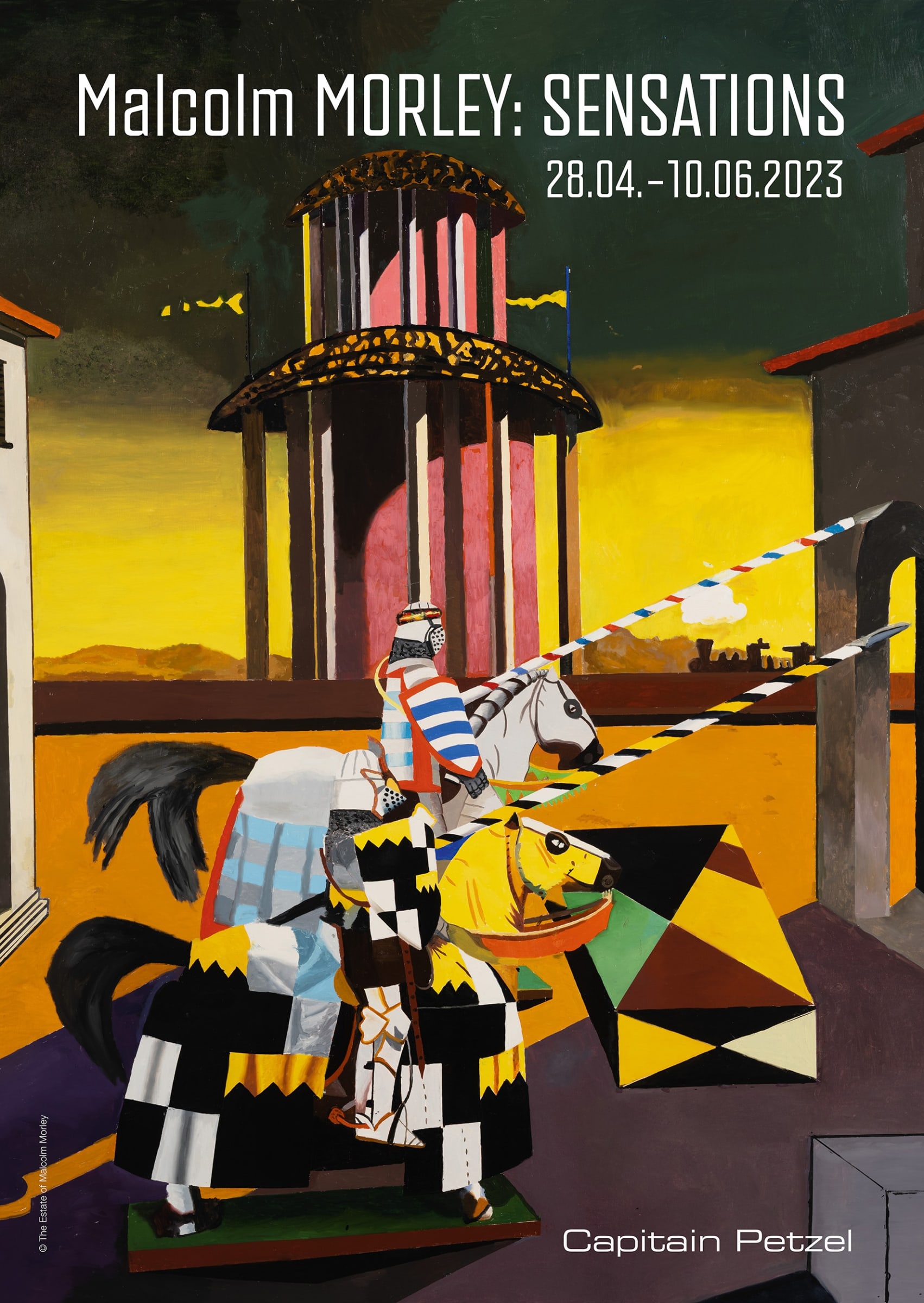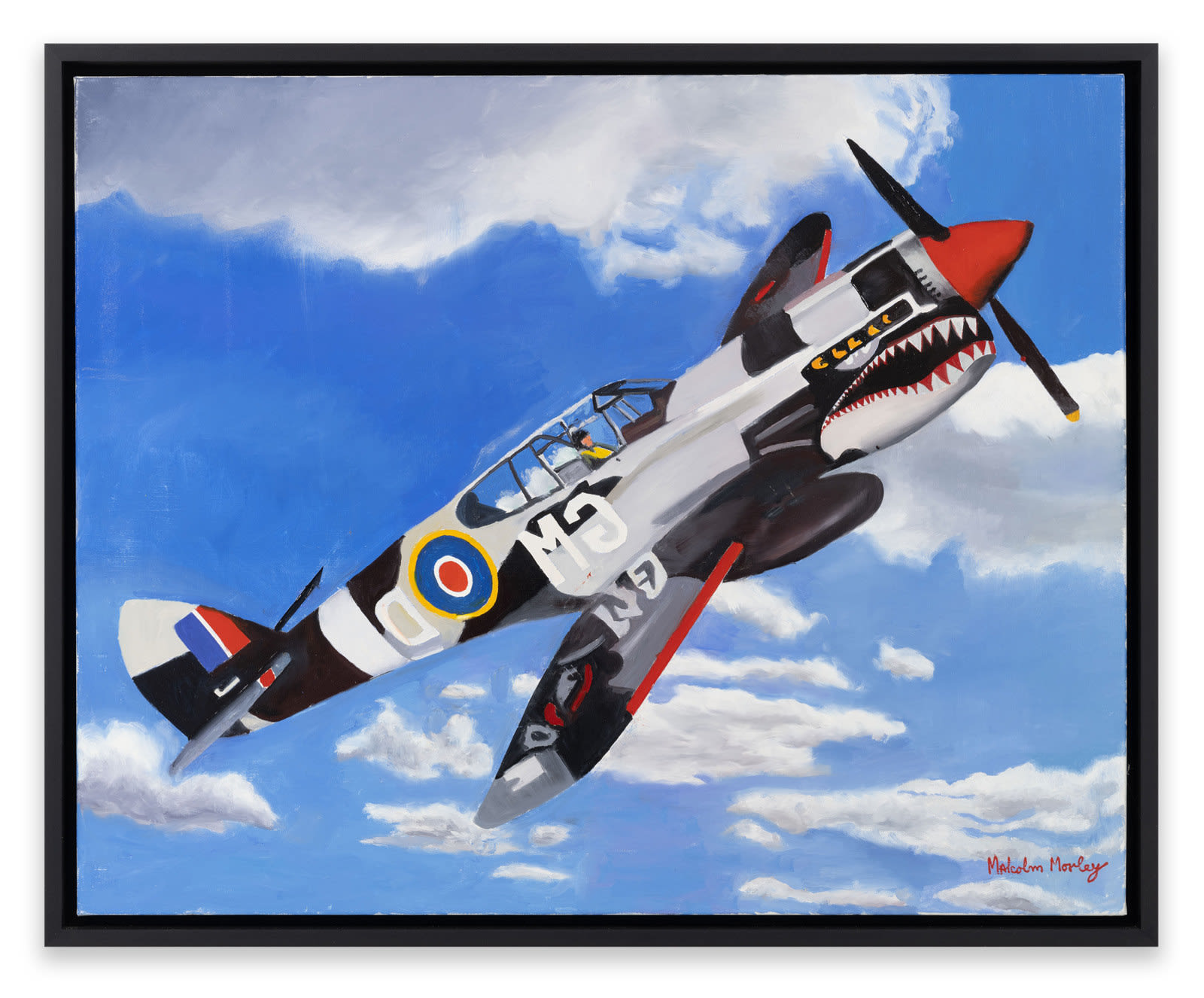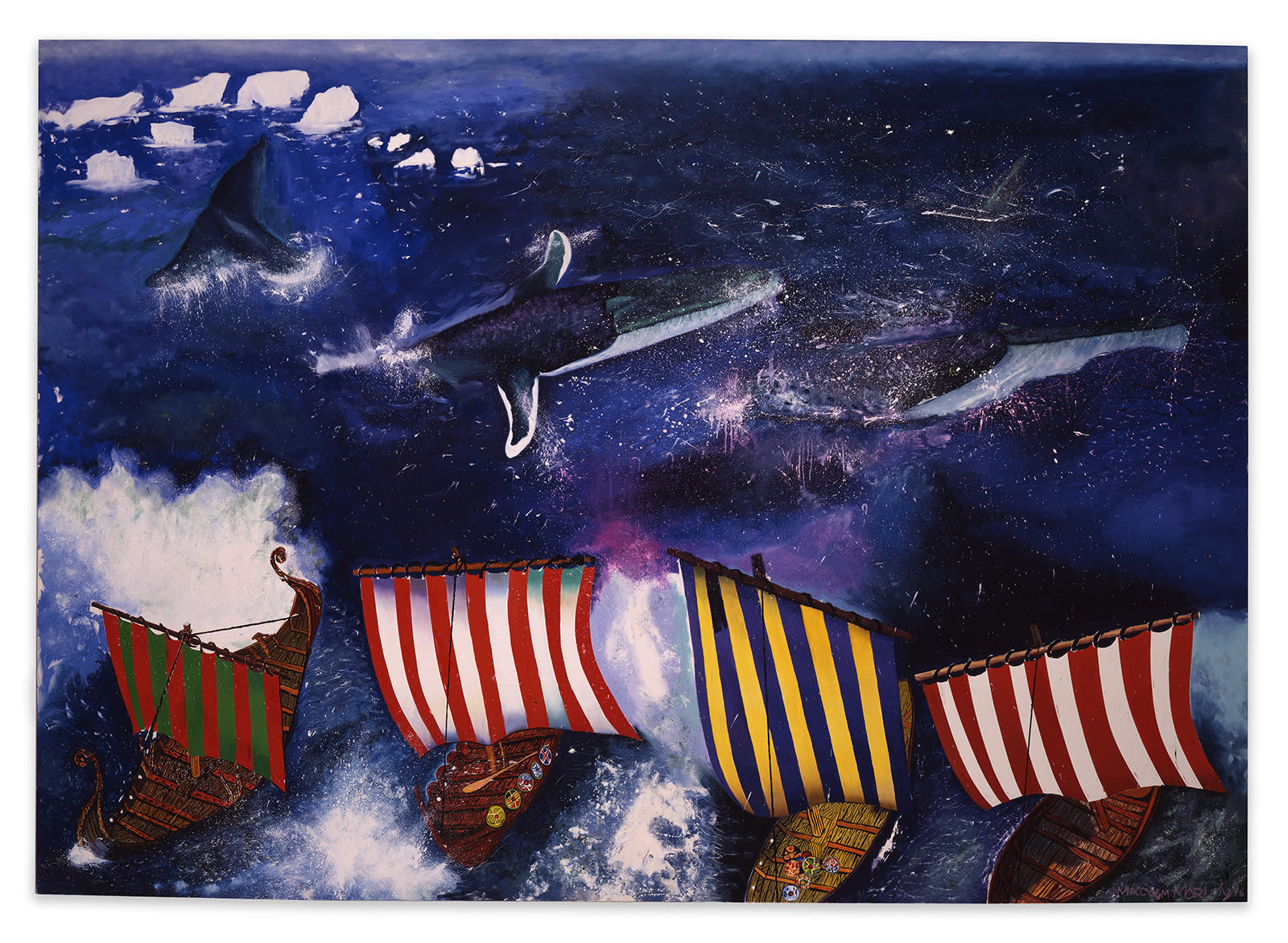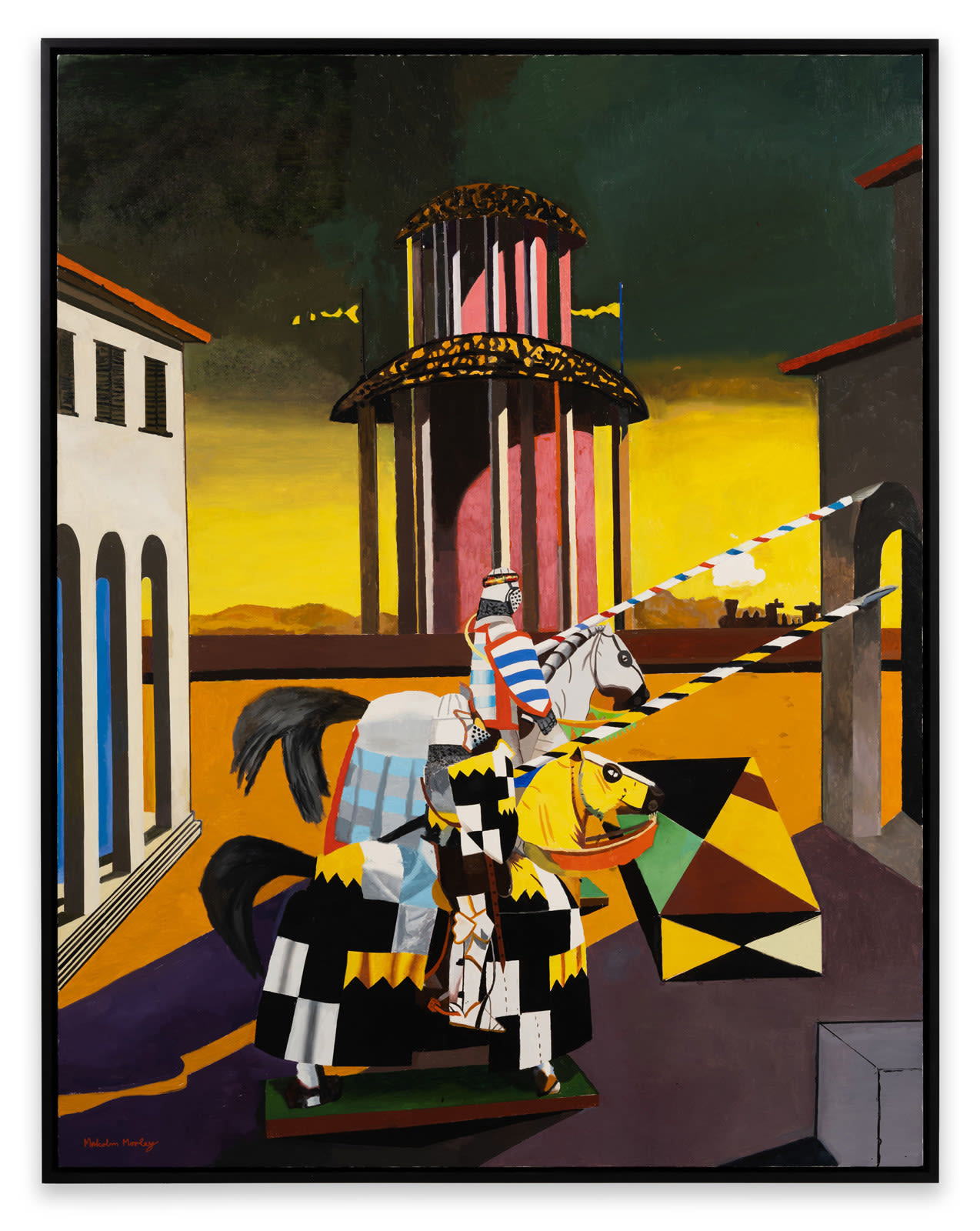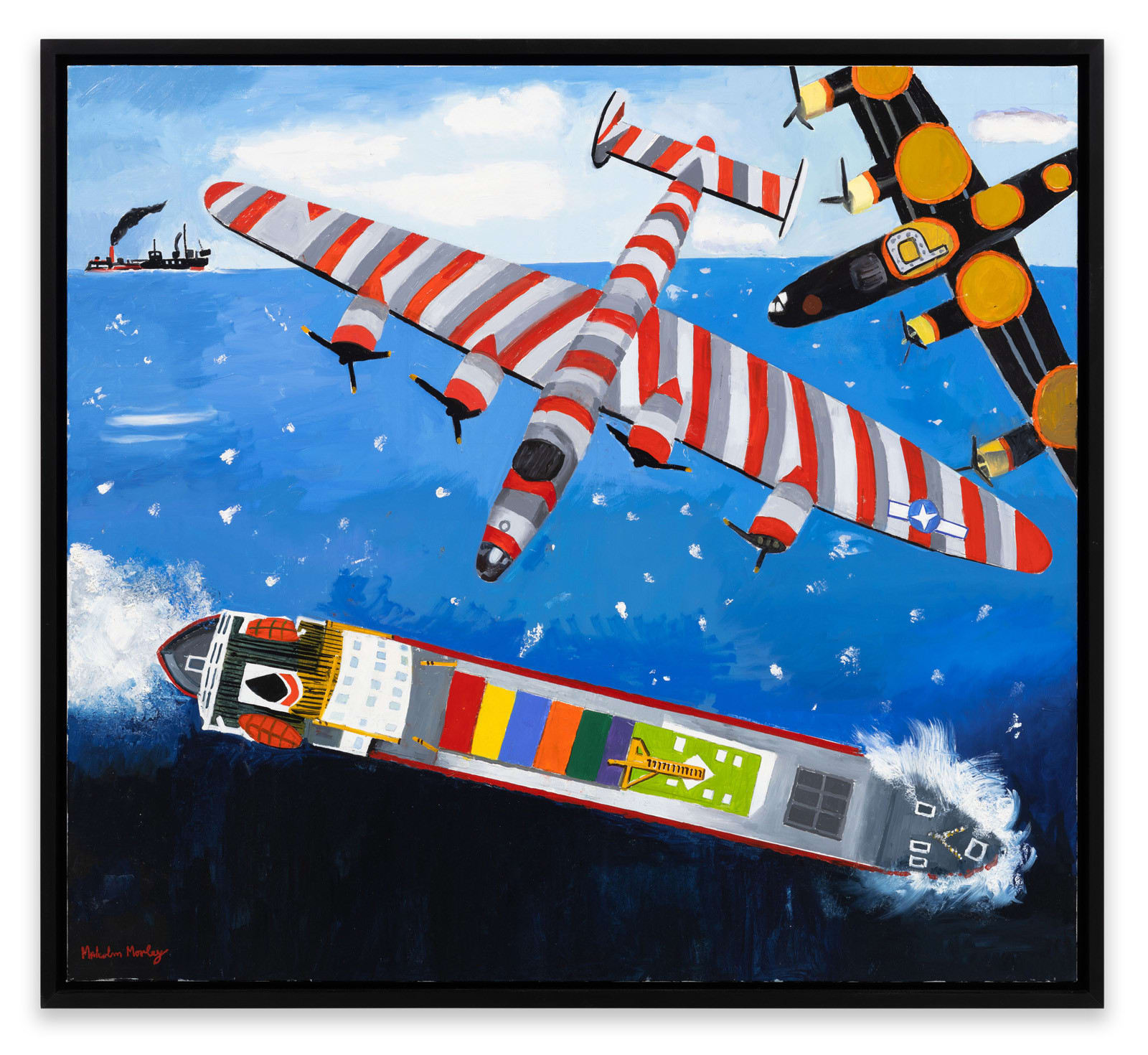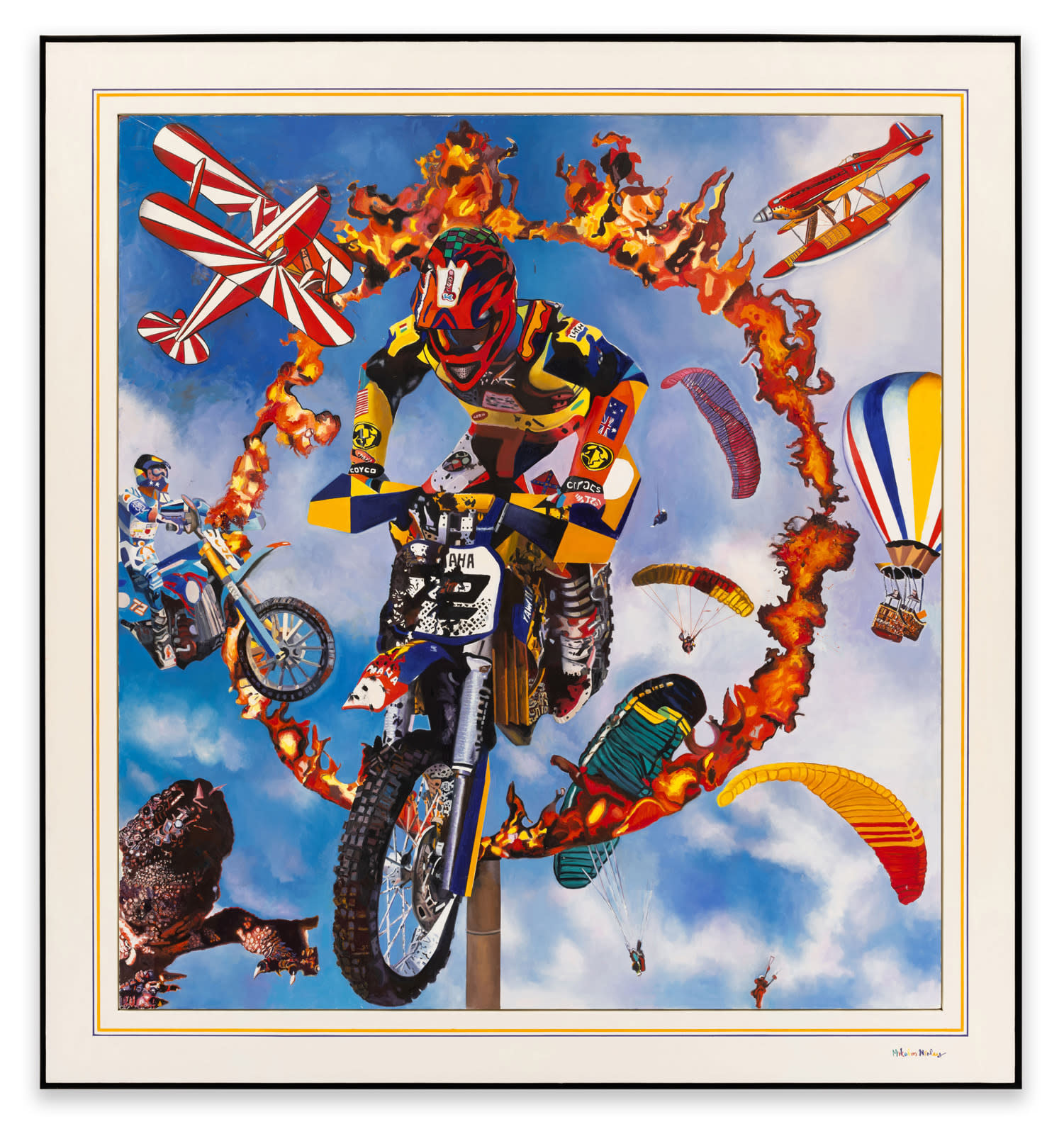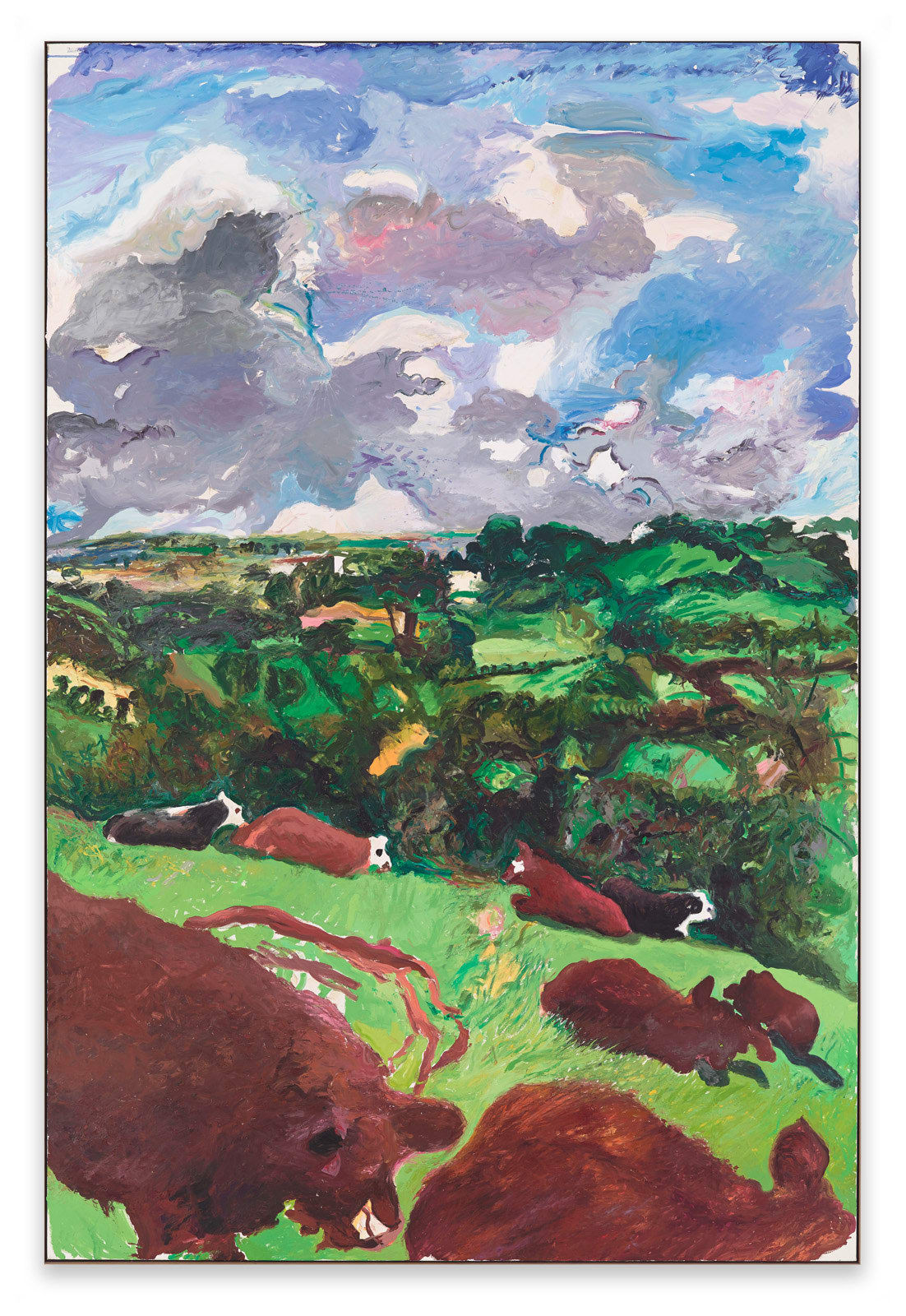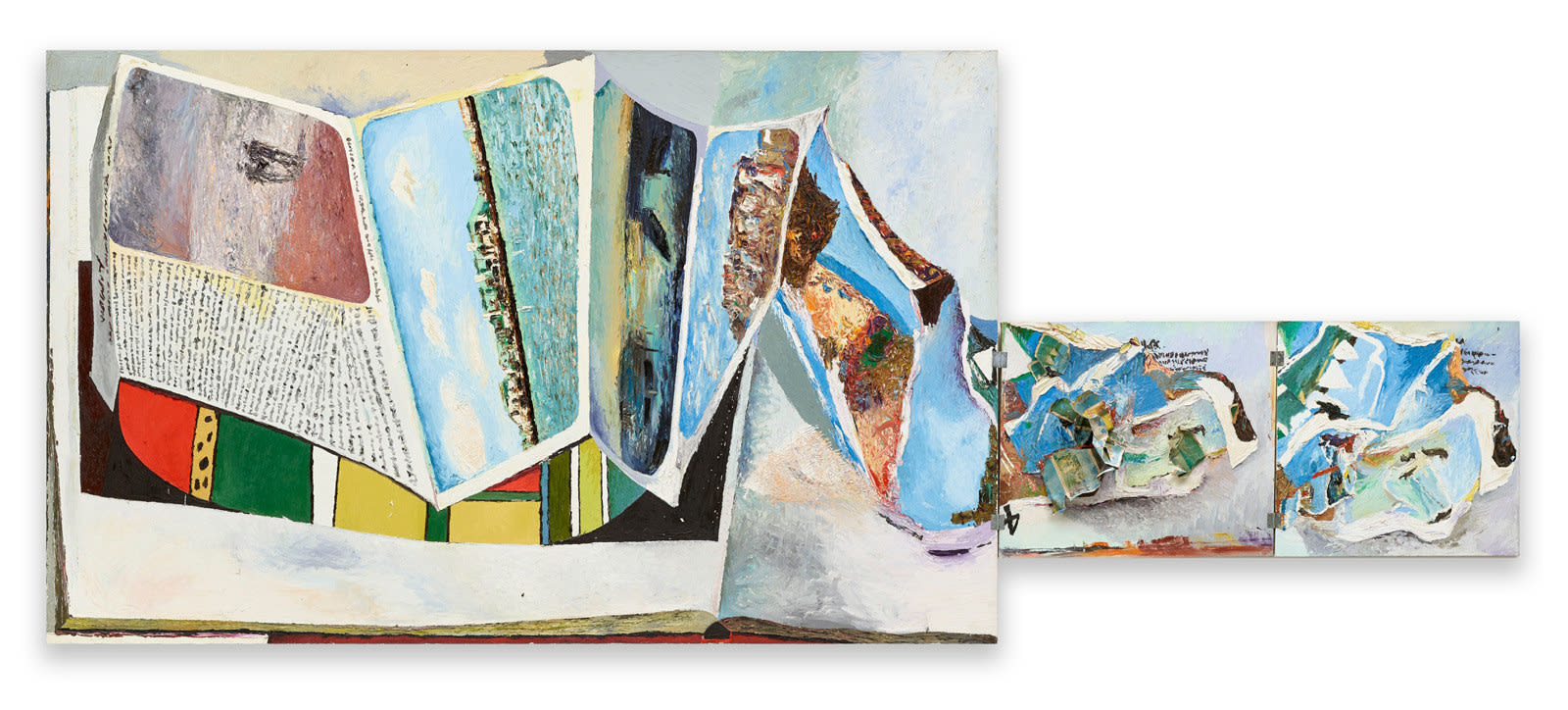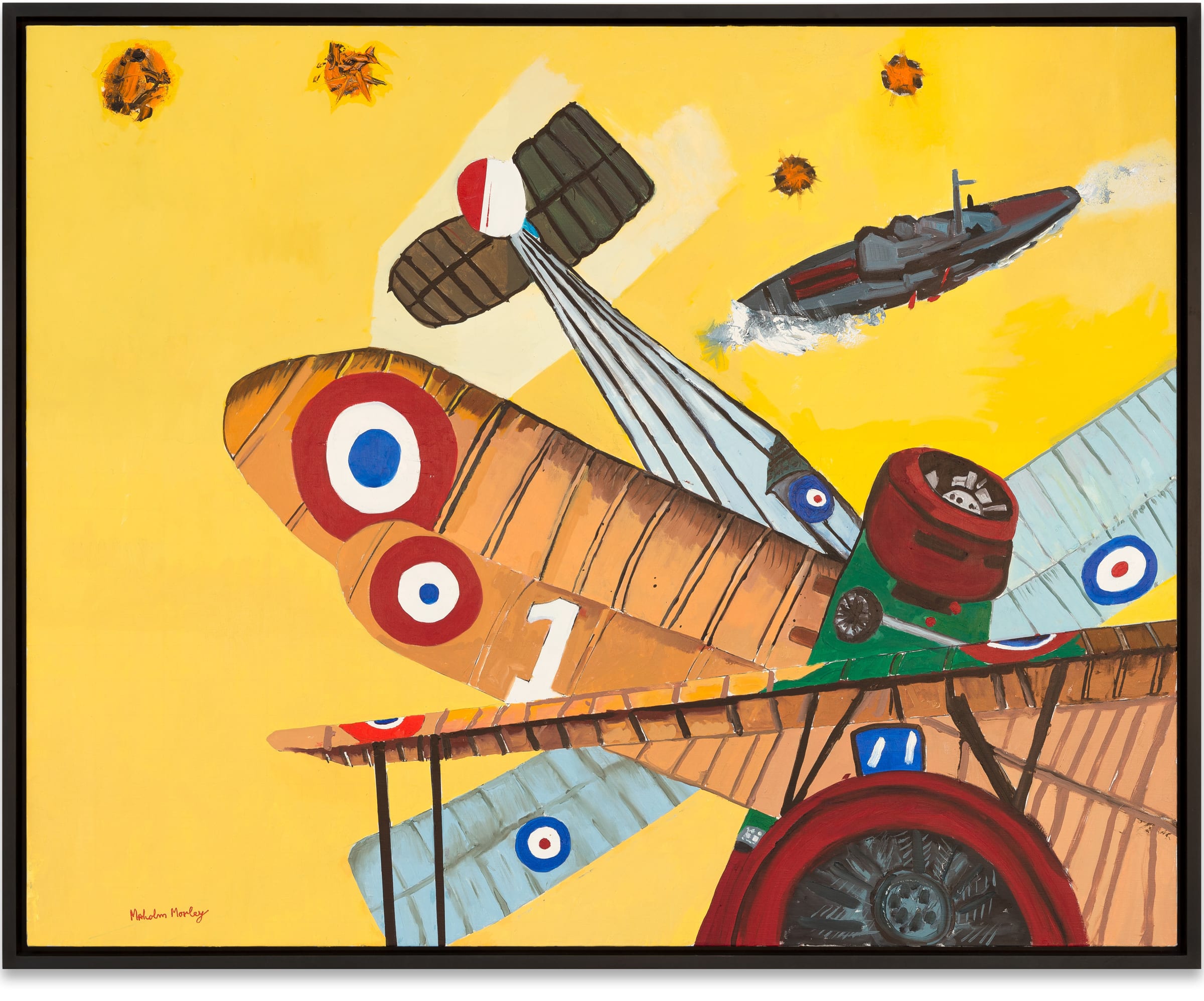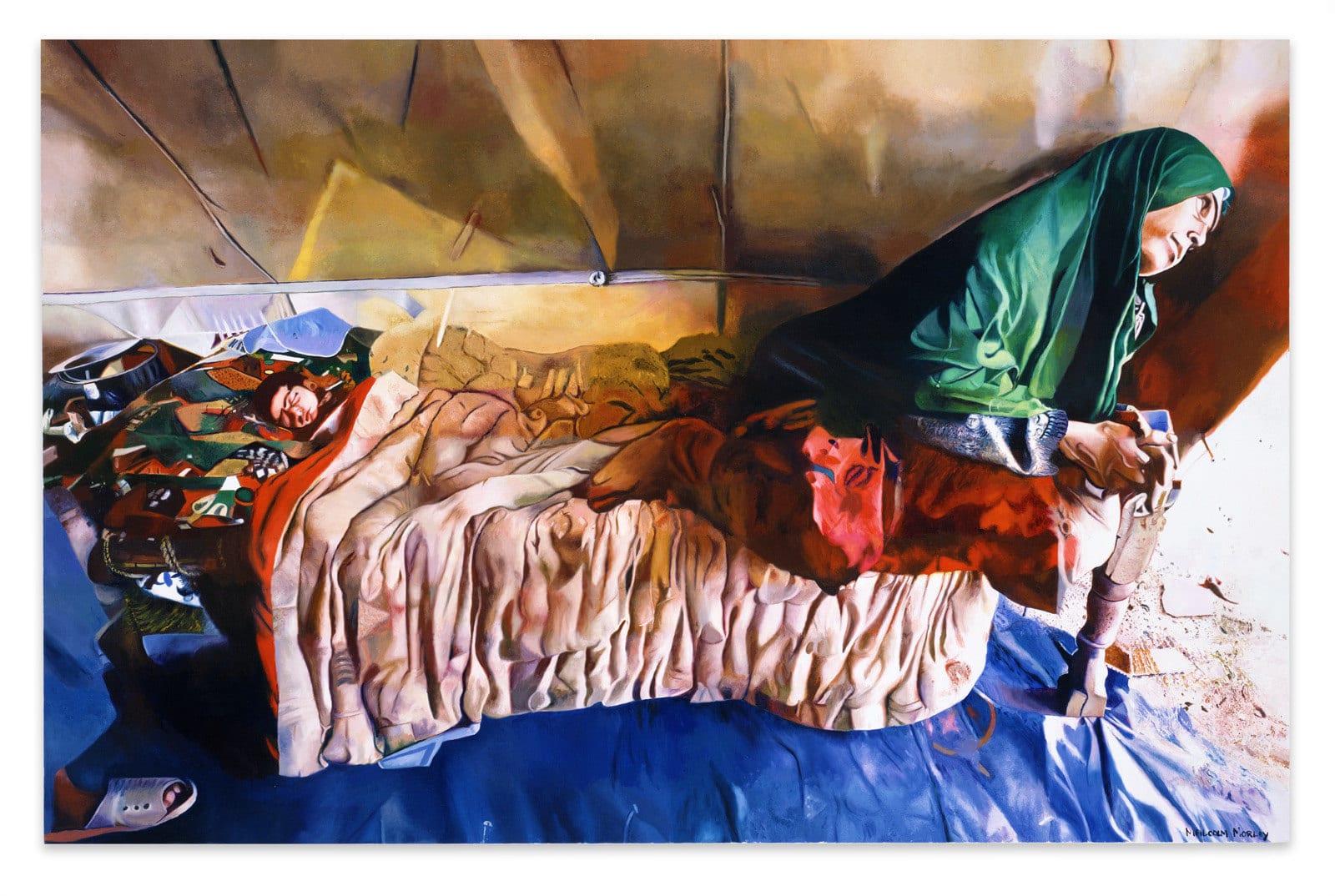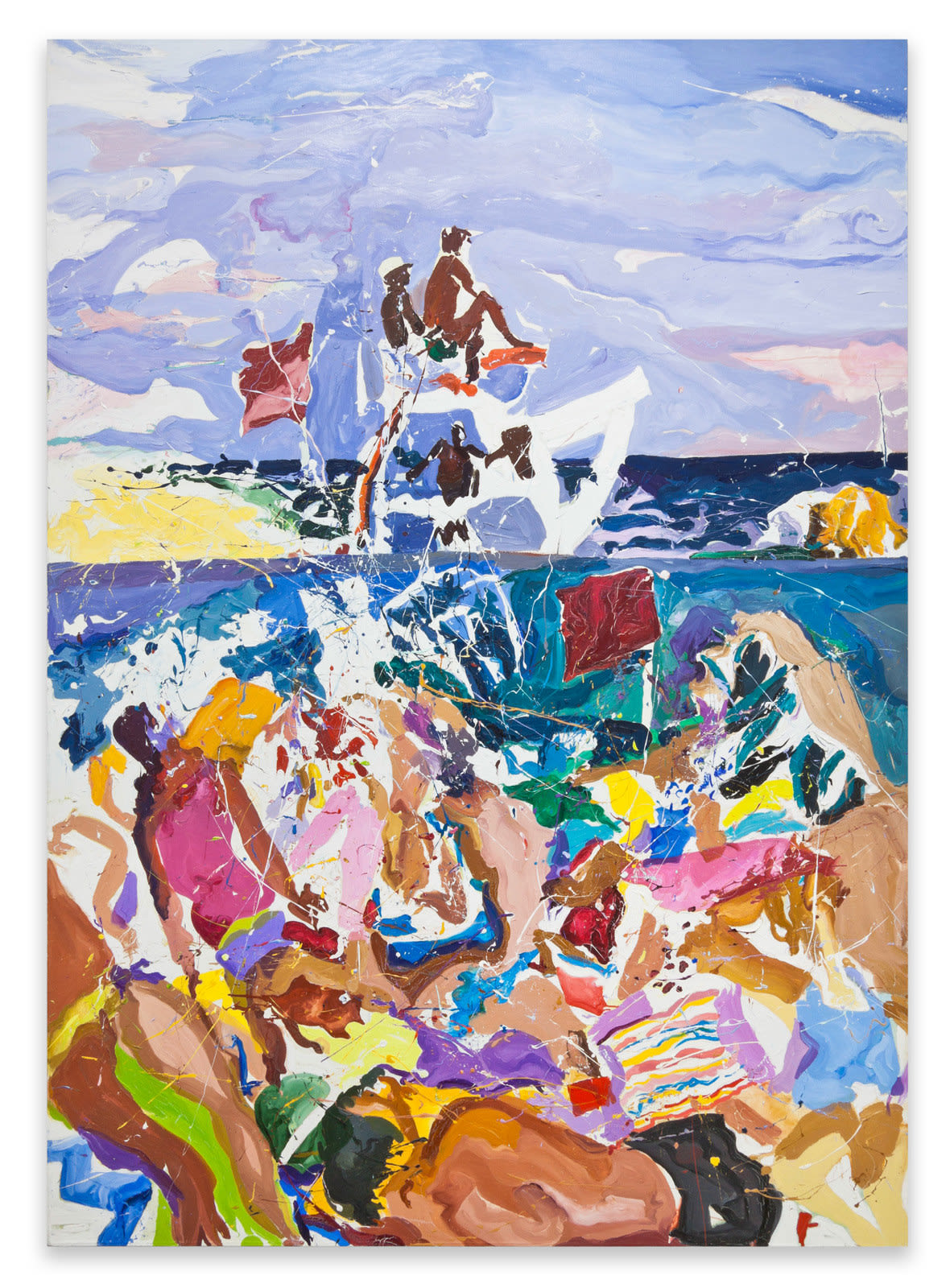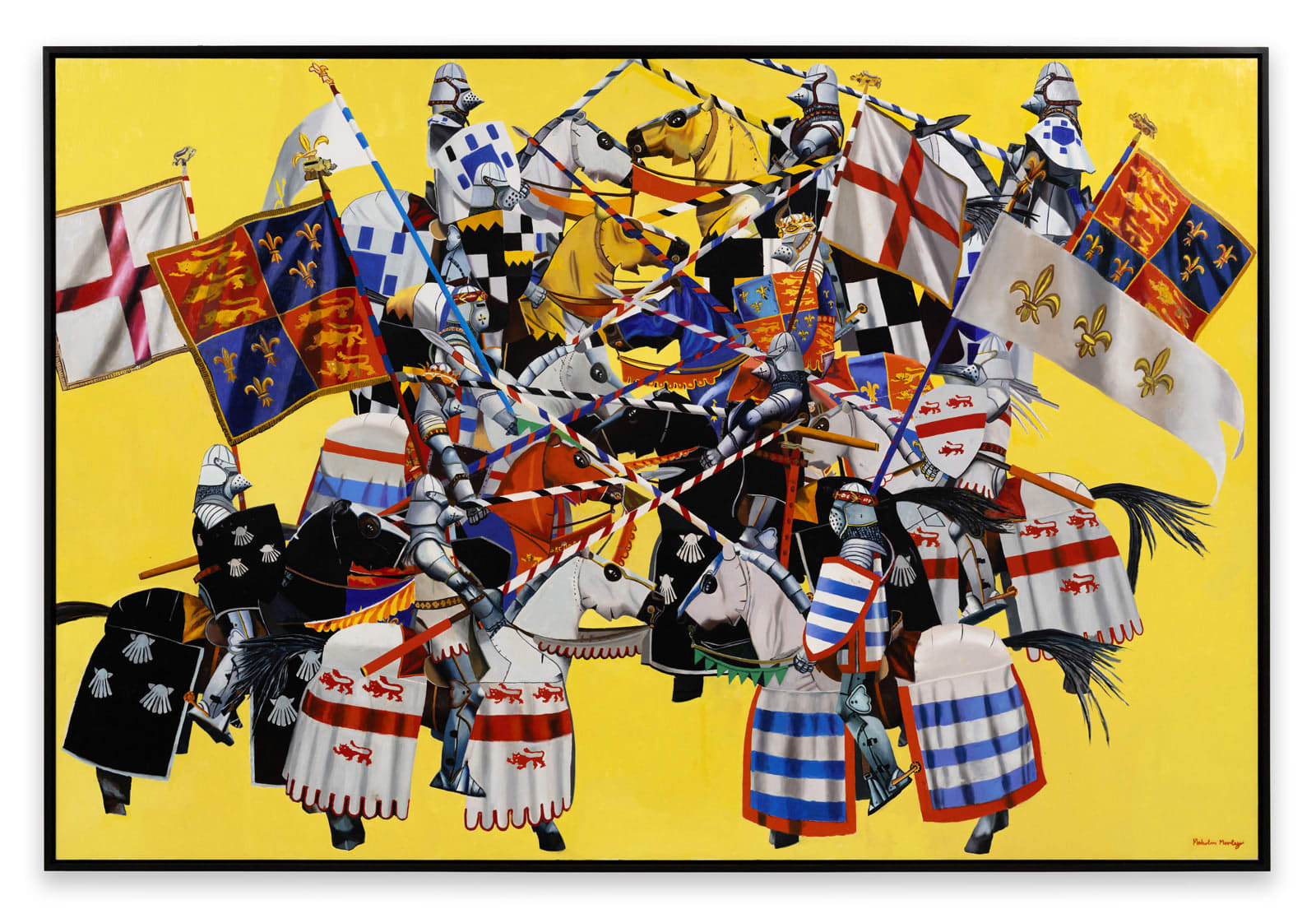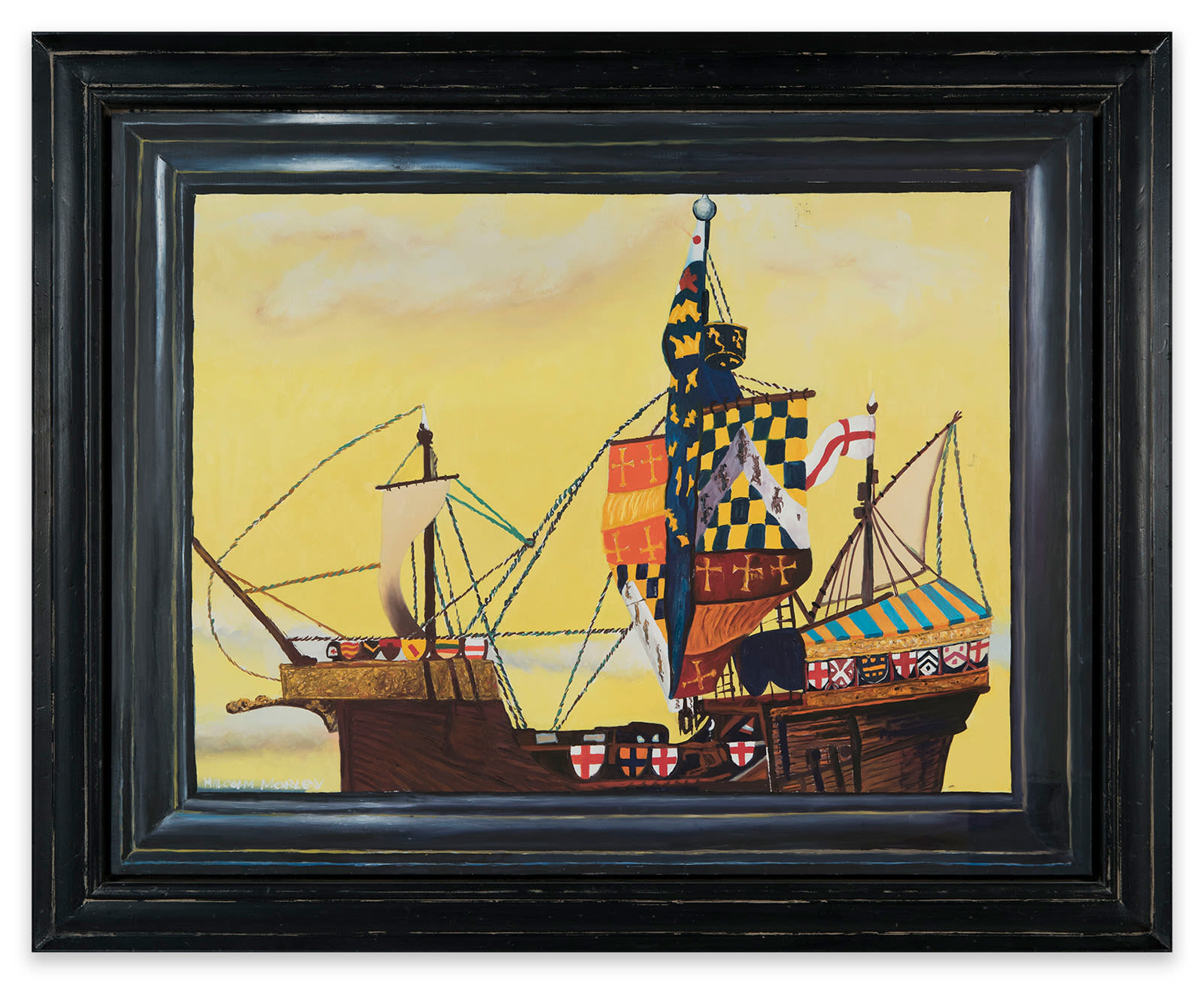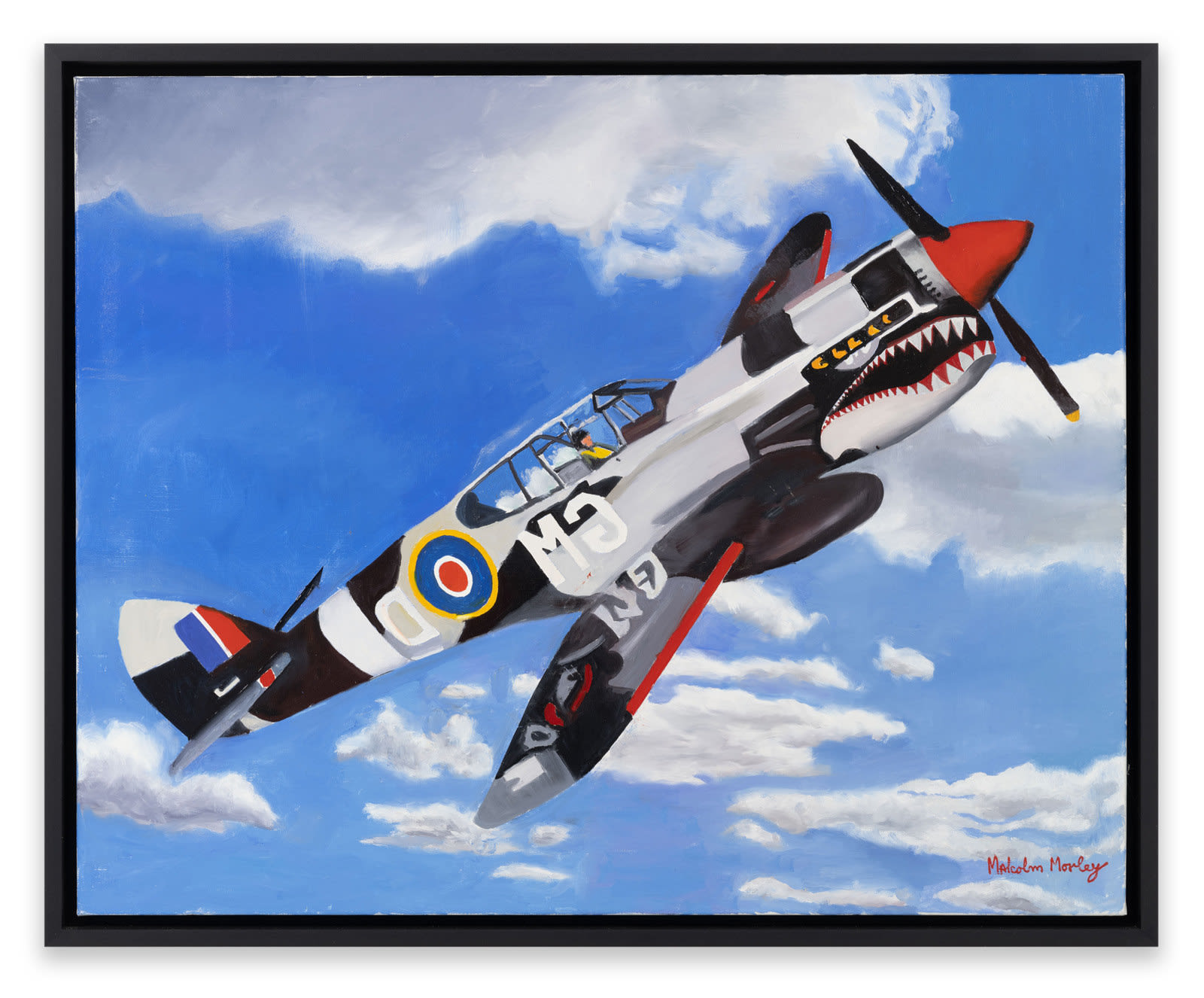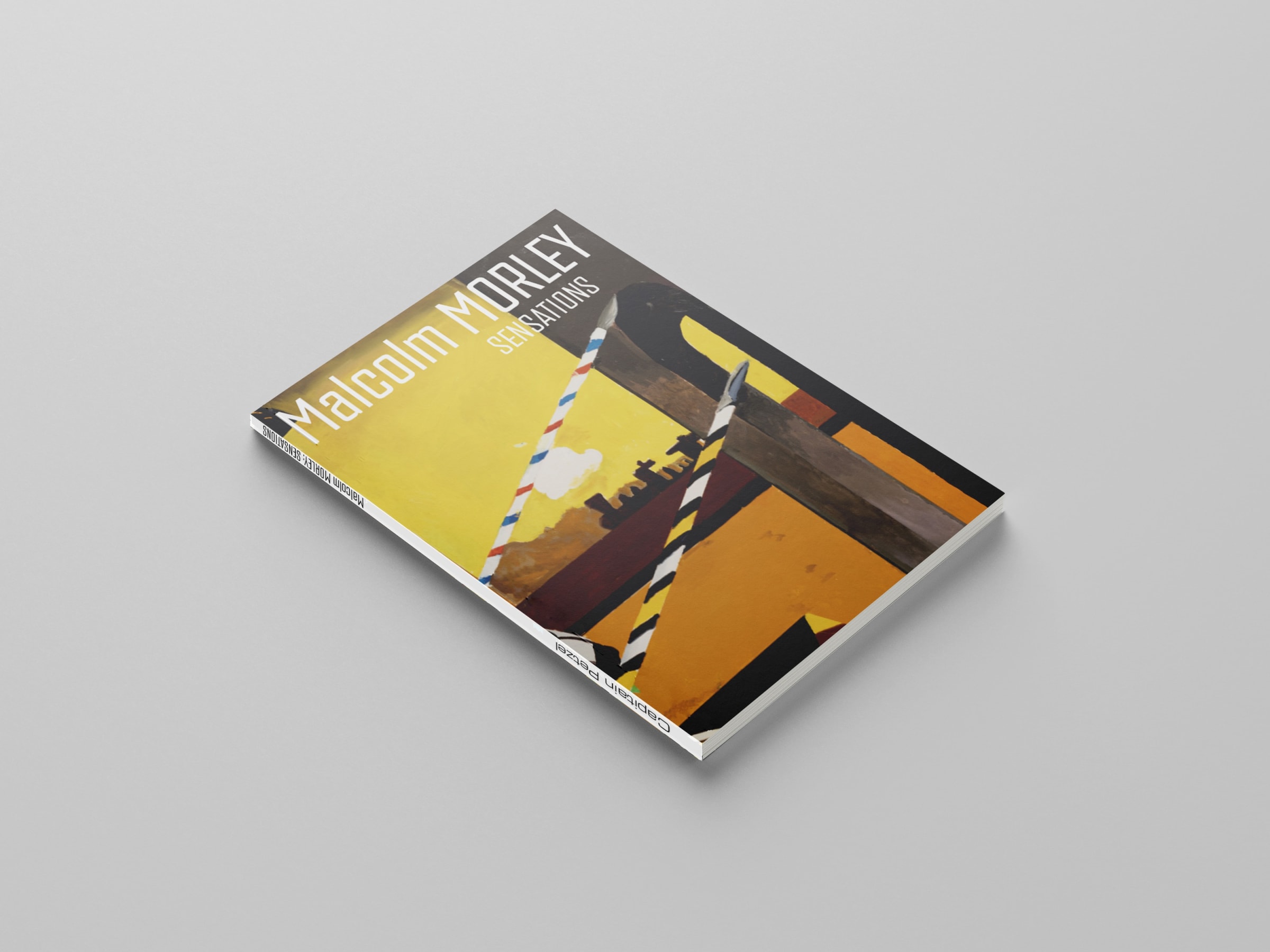Malcolm Morley: Sensations
-
Overview
The fundamental aspect, the motor that drove Malcolm‘s passion for painting, was sensation. Sensation being the unmediated bodily response to the outside world through the senses; in this case, the sense of sight. Malcolm admired the art of Van Gogh, Cézanne and Picasso, artists whom he felt were more concerned with presenting the world as something made with paint, to create a new visual experience, rather than being concerned with what the subject matter was ‘about’. Malcolm said he wanted to get the painting directly into the nervous system:
„...the emphasis is very much on the idea of looking at. I paint them from the way in which I’m looking at them, which is really from the point of view of sensations. I feel the sensation of it, and preimagine it made of paint. ...So it’s not just a question of looking, but of doing, in relation to this, in relation to that, in relation to the space between things. In a way, it’s very classical.“
As seen from a 60-year perspective, it seems that any material could be a potential painting for him; the range is overwhelming. But not everything was a final candidate for his painted world - the images he chose were personal and idiosyncratic. Cézanne had his apples, Malcolm had his ships and airplanes from his childhood during WWII. These images were something that engaged Malcolm’s attention, as an affectionately-remembered association or attraction, and then as a rigorous collaborator that held up to his prolonged scrutiny during the diligent painting process.
The grid he used to format and scale up the images ensured that every square centimeter of the canvas received his focused attention, heightening the experience so that the finished painting represented his initial sensation with the same concentration. Each square was treated as a small abstract painting of its own, taken all together they make one unified area. Unity in diversity, diversity in unity.
Looking over the course of his oeuvre, one sees he had invented many styles of painting, from Photorealism, Neo-Expressionism, his own brand of Surrealism, and beyond, using a vast assortment of images (postcard images, cruise ships, advertising, beach scenes, airplanes, sports figures, motocross racers, knights, castles, etc.), always primarily committed to the sensation of seeing. The paintings are akin to the intense encounter a child has when experiencing the outside world for the first time. When the unknown, the unseen, or the overlooked makes its appearance. Malcolm lived and painted the seeming paradox of manifesting one’s innocence through a lifetime of experience.
Michael Short
Curated by Michael Short in close collaboration with the Estate of Malcolm Morley, the exhibition includes loans by private collections, and will be accompanied by a publication surveying the artist’s work.
DOWNLOAD EXHIBITION TEXT EN | DE
DOWNLOAD CV HERE
-
-

Malcolm Morley
Melee at Agincourt, 2017Oil on linen
Signed recto
Image dimensions: 193 x 289.6 cm / 76 x 114 inches
Framed dimensions: 198 x 295 cm / 78 x 116.1 inches -
Installation Views
-
-

-

-
Malcolm Morley’s blues are extraordinary. Card-table flat and infinite, they collapse all sense of proximity. At once remote and wild with their gnarly collisions of space and time, Morley’s paintings induce a sublime kind of nausea.
- Dana Schutz
-

Malcolm Morley
O.K., 2015Oil on linen
Signed recto
Image dimensions: 67.3 x 160 cm / 26.5 x 63 inches
Framed dimensions: 71 x 165 cm / 28 x 65 inches -
-

-
„And so seeing work from a long time period together is pleasurable because not only do you see the diversity, you also see some fidelity... Things change, but they are still true to something. And with that you‘ve got it. Diversity and fidelity.“
– Malcolm Morley
-

-
Malcolm was a great artist and one of the most purely creative and innovative painters I’ve ever had the privilege to meet. Just the other day I was contacted by a friend/young painter who is crazy about Malcolm’s work. He asked me if I thought the “art world” ever got Morley’s work. I replied that I wasn’t sure if Malcolm ever got Morley’s work.
- Eric Fischl
-
-
Works
-
 Malcolm MorleyPiazza d'Italia with French Knights, 2017Oil on linenSigned rectoImage dimensions:
Malcolm MorleyPiazza d'Italia with French Knights, 2017Oil on linenSigned rectoImage dimensions:
182.9 x 142.2 cm / 72 x 56 inches
Framed dimensions:
188.3 x 147.6 cm / 74.1 x 58.1 inches -
 MALCOLM MORLEYFreighter with Primary Colors and B2 Bombers, 2013Oil on linenSigned rectoImage dimensions:92.1 x 101.6 cm / 36.3 x 40 inches
MALCOLM MORLEYFreighter with Primary Colors and B2 Bombers, 2013Oil on linenSigned rectoImage dimensions:92.1 x 101.6 cm / 36.3 x 40 inches
Framed dimensions:97.3 x 106.8 cm / 38.3 x 42.1 inches -
 Malcolm MorleyRing of Fire, 2009Oil and string on linen with separate oil on linenSigned rectoImage dimensions:
Malcolm MorleyRing of Fire, 2009Oil and string on linen with separate oil on linenSigned rectoImage dimensions:
223.5 x 207 cm / 88 x 81.5 inches
Framed dimensions:
225 x 209.5 cm / 88.6 x 82.5 inches -
 MALCOLM MORLEYLandscape with Bullocks, 1980Oil on canvas274 x 183 cm / 108 x 72 inchesCourtesy Wendy Gondeln
MALCOLM MORLEYLandscape with Bullocks, 1980Oil on canvas274 x 183 cm / 108 x 72 inchesCourtesy Wendy Gondeln -
 MALCOLM MORLEYFire Island with a Second Ending, 1974Oil on canvas with paper collage on three panels150 x 380 cm / 60 x 150 inchesCourtesy Wendy Gondeln
MALCOLM MORLEYFire Island with a Second Ending, 1974Oil on canvas with paper collage on three panels150 x 380 cm / 60 x 150 inchesCourtesy Wendy Gondeln -
 MALCOLM MORLEYTheory of Catastrophe, 2004Oil on linenSigned rectoImage dimensions:
MALCOLM MORLEYTheory of Catastrophe, 2004Oil on linenSigned rectoImage dimensions:
193 x 206 cm / 76 x 81 inches
Framed dimensions:
198.8 x 211.5 cm / 78.3 x 83.3 inchesCourtesy Hall Collection -
 MALCOLM MORLEYThe Navigators, 1996Oil on linenSigned recto163 x 226 cm / 64 x 89 inchesCourtesy Wendy Gondeln
MALCOLM MORLEYThe Navigators, 1996Oil on linenSigned recto163 x 226 cm / 64 x 89 inchesCourtesy Wendy Gondeln -
 Malcolm MorleyAirlock, 2014Oil on linenSigned rectoImage dimensions:
Malcolm MorleyAirlock, 2014Oil on linenSigned rectoImage dimensions:
101.6 x 127 cm / 40 x 50 inches
Framed dimensions:
106.8 x 132.2 cm / 42 x 52 inches -
 MALCOLM MORLEYMonster Energy, 2007Oil on linenSigned rectoImage dimensions:
MALCOLM MORLEYMonster Energy, 2007Oil on linenSigned rectoImage dimensions:
162 x 183 cm / 64 x 72 inches
Framed dimensions:
168.9 x 189.2 cm / 66.5 x 74.5 inchesCourtesy Hall Collection -
 MALCOLM MORLEYGreen Shawl, 2002Oil on linenSigned rectoImage dimensions:
MALCOLM MORLEYGreen Shawl, 2002Oil on linenSigned rectoImage dimensions:
147 x 229 cm / 58 x 90 inches
Frame dimensions:
151.1 x 232.4 cm / 59.5 x 91.5 inchesCourtesy Hall Collection -
 MALCOLM MORLEYLifeguard, 1988Oil and wax on canvas280 x 204 cm
MALCOLM MORLEYLifeguard, 1988Oil and wax on canvas280 x 204 cm
110 x 80 inchesCourtesy Wendy Gondeln -
 MALCOLM MORLEYMaldoror I, 2014Oil on linenSigned rectoImage dimensions:127 x 101.6 cm / 50 x 40 inches
MALCOLM MORLEYMaldoror I, 2014Oil on linenSigned rectoImage dimensions:127 x 101.6 cm / 50 x 40 inches
Framed dimensions:132 x 106.8 cm / 52 x 42 inches -
 Malcolm MorleyMelee at Agincourt, 2017Oil on linenSigned rectoImage dimensions:
Malcolm MorleyMelee at Agincourt, 2017Oil on linenSigned rectoImage dimensions:
193 x 289.6 cm / 76 x 114 inches
Framed dimensions:
198 x 295 cm / 78 x 116.1 inches -
 MALCOLM MORLEYMedieval Ship With Lemon Sky, 1996Oil on canvas, in artist's frameSigned recto71 x 91.5 cm / 28 x 36 inches
MALCOLM MORLEYMedieval Ship With Lemon Sky, 1996Oil on canvas, in artist's frameSigned recto71 x 91.5 cm / 28 x 36 inches -
 Malcolm MorleyP-40 Warhawk Soaring, 2013Oil on linenSigned rectoImage dimensions:
Malcolm MorleyP-40 Warhawk Soaring, 2013Oil on linenSigned rectoImage dimensions:
61 x 76.2 cm / 24 x 30 inches
Framed dimensions:
65.6 x 80.6 cm / 25.8 x 31.7 inches
-
-
Publications
